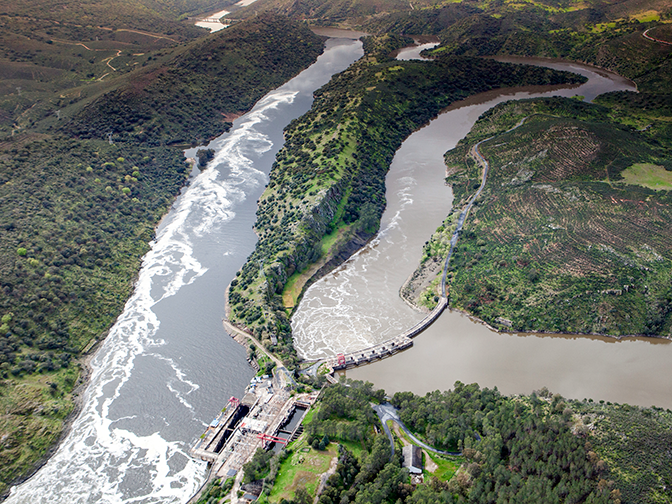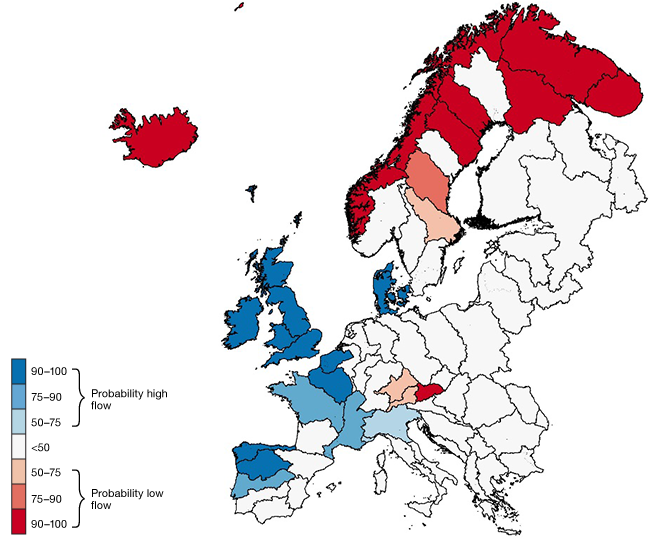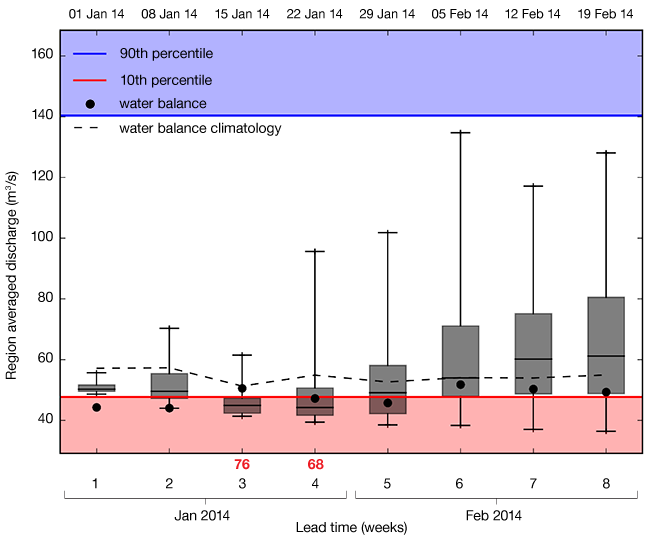

A new seasonal outlook developed by ECMWF that extends the forecast horizon for river levels from two weeks to two months is currently being tested within the Copernicus European Flood Awareness System (EFAS).
The main focus of EFAS is to forecast large-scale river floods up to two weeks ahead. Now EFAS is expanding the forecast horizon by introducing a seasonal hydrological outlook.
The outlook aims to provide information on the surplus or deficit of water resources over the upcoming months to support better planning for flood response, river navigation, agricultural irrigation and hydropower energy production.
In the past, seasonal hydrological forecasts used historical meteorological data to make predictions for the coming season. However, developments in numerical weather prediction in recent years have opened the possibility of dynamic predictions of future river levels at a sub-seasonal to seasonal scale (beyond two weeks and up to two months ahead).
Seasonal hydrological outlooks
To calculate the outlook, seasonal meteorological ensemble forecasts from ECMWF’s System 4 are used as input for the EFAS hydrological model system. However, the uncertainty and error of any forecast increases with lead time. Therefore, the seasonal forecasting system is not expected to be able to give detailed information (daily streamflow at specific locations) on time scales of weeks and months.
Instead, the newly developed system provides an outlook of whether the weekly averages over aggregated regions are likely to be above or below a certain threshold. In this case, these thresholds are the 90th and 10th percentiles of the flow climatology, specific to each region.

The new seasonal forecast layout of EFAS. Forecasts are displayed as regions comprising sub-basins or several river basins grouped together. The red and blue shading indicates the probability of river levels being very different from normal levels for that time of year. The intensity of the colour indicates the probability of such an event occurring in the coming two months.
The aggregated regions ensure that the hydrological units are large enough to filter out the small-scale spatial variability, in the same manner as the weekly averages filter out the small-scale temporal variations. The output gives forecasters an early indication of whether they can expect a surplus or deficit of water resources in the coming months across the European domain.

A times series plot for a region. The blue and red areas denote the 90th and 10th percentiles of the average weekly flow climatology for the specific region. The seasonal outlook is shown as boxplots for the coming eight weeks. The black dots are the discharge calculated using observed precipitation and temperature and are used for verification. These are added to the plots as observations become available. The dates above the plot are the starting day of each week. The red numbers indicate the probability of an event occurring.
Forecasters can click a region to display a more detailed forecast for the coming eight weeks that shows the timing of the event as well as the duration. The new seasonal forecast is currently available as a prototype for EFAS operational centres. The next step is to bring these into the operational EFAS setup to deliver the products to EFAS end users on a regular basis.
About EFAS
The Copernicus European Flood Awareness System (EFAS) is the first operational European system monitoring and forecasting floods across Europe. It provides complementary flood early warning information up to two weeks in advance to the relevant national or regional authorities and the EC’s Emergency Response Coordination Centre (ERCC).
EFAS is part of the EU-funded Copernicus Emergency Management Service and has been running operationally at ECMWF since October 2012. EFAS uses ensemble forecasts from ECMWF and ECMWF runs the Computational Centre of EFAS.
Top photo: Dam in Monfragüe National Park, Spain (ANNECORDON/iStock/Thinkstock)
